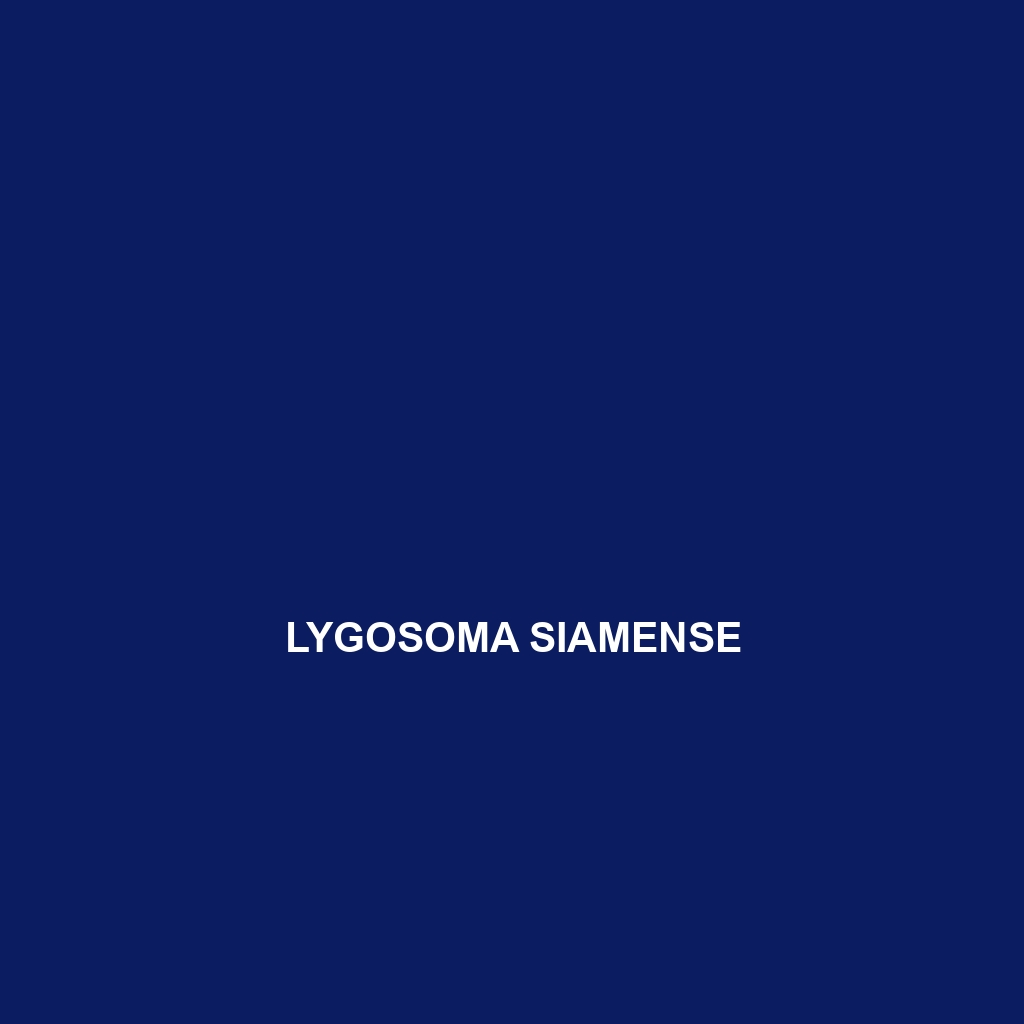Common Name
Lygosoma siamense
Scientific Name
Lygosoma siamense
Habitat
Lygosoma siamense is primarily found in a range of habitats across Southeast Asia, particularly in rainforests and savannas. This species thrives in warm, humid climates where temperatures typically range from 22°C to 30°C. These environments provide ample cover and opportunities for hunting and hiding from predators. Additionally, Lygosoma siamense often inhabits areas with dense vegetation, such as underbrush and leaf litter, making them adept at blending into their surroundings. The presence of nearby water bodies, such as streams and marshes, adds to their habitat’s complexity, providing additional moisture and food sources.
Physical Characteristics
Lygosoma siamense is a medium-sized lizard, typically reaching lengths of 20 to 40 cm. Its elongated body is characterized by a smooth, shiny dorsal surface, which often showcases a vibrant brown or green coloration, patterned with darker stripes or spots that enable effective camouflage within its natural habitat. This lizard’s distinctive features include a flattened head, small limbs, and a long, tapered tail, which it may shed in defense against predators. The ventral side is lighter in color, often displaying a creamy or pale hue that contrasts starkly with its dorsal coloration. Such physical adaptations not only enhance its aesthetic appeal but also assist in thermoregulation.
Behavior
The behavior of Lygosoma siamense is largely influenced by its habitat and environmental conditions. This species is known for its nocturnal behavior, primarily foraging at night to reduce competition and avoid overheating during the day. These lizards exhibit solitary habits, coming together only during the mating season. They are also quite agile, capable of swift movements to evade predators. Notably, they have a unique ritual during mating seasons where males engage in intricate displays involving head bobbing and push-ups to attract females. The social interactions during these displays reveal the complex mating strategies and competitive dynamics that exist among individuals.
Diet
Lygosoma siamense is classified as an insectivore, preferring a diet that mainly consists of a variety of insects, arachnids, and other small invertebrates. Their feeding behavior is characterized by active foraging, where they utilize both their keen eyesight and acute sense of smell to detect prey. During the rainy season, when insect populations surge, these lizards are known to increase their feeding frequency significantly. This adaptive dietary pattern allows them to thrive in their ecological niche, playing an essential role in controlling insect populations within their habitats.
Reproduction
The reproductive cycle of Lygosoma siamense typically follows a seasonal pattern, with mating peaking during the warmer, moist periods, which coincide with increased food availability. After a gestation period of approximately 45 to 60 days, females lay between 4 to 12 eggs in concealed nests, often hidden beneath leaf litter to reduce predation risk. The eggs usually hatch after three weeks, with hatchlings emerging fully formed and independent. Parental care is minimal, with adults providing no care post-hatching, a common survival strategy for many reptiles.
Conservation Status
As of recent assessments, Lygosoma siamense has been classified as least concern according to the IUCN Red List. However, habitat destruction and climate change pose significant threats to its population stability. Ongoing conservation efforts focus on habitat preservation and restoration, acknowledging the need to maintain the delicate balance of the ecosystems where these lizards reside. Advocacy for sustainable land-use practices is crucial to mitigate the impacts of deforestation and urbanization, ensuring the long-term survival of this species.
Interesting Facts
One of the most fascinating aspects of Lygosoma siamense is its remarkable ability to regenerate its tail after losing it to a predator—a phenomenon known as autotomy. This ability not only aids in escape but also serves as a mechanism for distraction, allowing the lizard to evade capture. Additionally, their unique coloration and patterns exhibit a form of cryptic coloration, enabling them to blend seamlessly into their surroundings, which is indispensable for both predation and avoiding predation.
Role in Ecosystem
Lygosoma siamense plays a vital role in its ecosystem as both a predator and prey. As an insectivore, it helps regulate insect populations, contributing to the balance of the food web. Furthermore, it serves as a food source for larger predators in its environment, such as snakes and birds, further entrenching its ecological importance. The species also participates in nutrient cycling through its feeding habits, ultimately enhancing soil health and plant productivity in its habitat. Understanding this lizard’s ecological role is key to appreciating and promoting biodiversity within its range.
